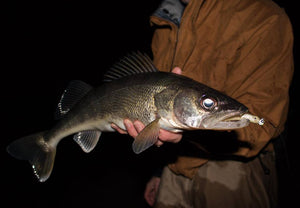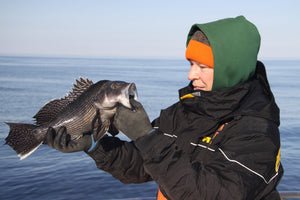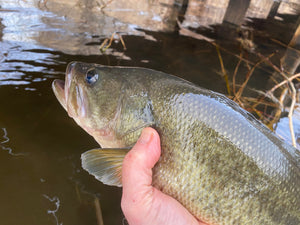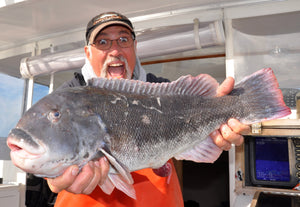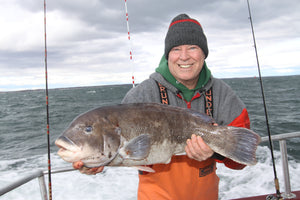Late-Summer Mahi Tips

Lean, mean and capable of swimming for short bursts at speeds up to 50 mph, it’s little surprise mahi mahi have a lot of fans among Long Island’s offshore faithful. An exciting light-tackle diversion that can add some tasty fillets to the ice box on a slow day or top off the best trip of your season, they possess amazing leaping ability, surprising power for a sleek-profiled competitor, and an uncanny ability to frustrate even seasoned blue water skippers just when it seems conditions are ideal.
To be certain, mahi remain a bycatch on most offshore trips as the cost of fuel and time mandates larger pelagics be the focus once you push out toward the 40-fathom line and beyond. Then again, with increasingly warm water temperatures inching ever closer to near shore waters in recent years, encounters with the iridescent mahi are becoming more frequent. In fact, they can now be found on a fairly regular basis along the 20-fathom curve at the peak of the season in late July and August, and around flotsam, buoys and weed patches as close as two to three miles off the beach on some occasions.

One of the most beautifully colored fish in the offshore waters.
True, short run mahi tend to be smaller than what you’ll generally find further off the beach. Known as “chicken mahi, they are great fun on light gear, willing combatants, and taste great. Of course, the further off you run, the better the odds of encountering mahi with double-digit weights topping 15, 20 or even 30 pounds. Still, you’ll be hard pressed to challenge the current I.G.F.A. record of 87 pounds taken off Costa Rica back in 1976. Incredibly fast growers, mahi can weigh over 20 pounds by age one, and 40- to 60 pounds by age four. Amazingly, that world record fish was estimated by marine scientists to be only four years old!
Whether you target mahi nearshore or off, there are some tricks and tips that can help increase both your encounters and ultimate success rate – especially for those new to the game. With that point in mind, here’s a few nuggets to help get you on the right track.
Shade And Prey
While a lot of mahi are caught in the course of trolling open water for tuna, targeting them around surface structure is generally the quickest route to consistent hook-ups. Simply put, mahi love to be around anything that can cast a shadow on the water and/or allows marine growth to accumulate and hold baitfish. To be sure, high-flyer markers and submarine ropes attached to sea bass cages and lobster pots are the classic example for mahi structure. In wide-open water, they provide a spit of shade and just enough growth along their lines to hold small baitfish. Free-roaming predators like mahi, wahoo, along with triggerfish, are drawn to these setups in the hope of finding easy meals. Just about any item can hold the mahi’s interest – no matter how small. We’ve seen several mahi pulled from under a single piece of floating 2’x4’. Weed patches are also worth a look.

Mahi have no qualms about taking to the air and often do so the second they feel the sting of the hook. OutdoorTom.com photo.
Two points to keep in mind when fishing pots and surface structure for mahi is that not every piece holds fish, and mahi in these situations tend to school by size. So, if you don’t connect or at least see a follow-up after a few casts, keep moving. If far enough offshore that larger mahi should be in the cards, drop a chicken or two on ice and then look for bigger game. If you do find smaller fish, though, make a couple of deeper retrieves before heading for greener pastures because larger mahi occasionally hold several feet beneath the smaller, more aggressive juveniles.
Search Lures Save Time
When it comes to prospecting for mahi, nothing gets the party started as quickly as a 3/4 - or 1-ounce white Andrus Rip Splitter, Fat Cow bucktail or plain Kalin’s Ultimate Saltwater Bullet Jighead tipped with a Berkley Gulp! Saltwater Jerk Shad, Otter Tails Straight Split Jig Tail, Fat Cow Eel Tail or a thin fish strip cut from a butterfish, mackerel, bunker or ballyhoo. Use these, or similar lure styles in which you have confidence to quickly probe each new piece of mahi structure when you arrive.
While mahi can be quite aggressive, they are also easily spooked. Thus, it’s important to approach your target quietly, using a trolling motor or well-calculated drift to achieve easy casting range. Upon closing in, simply toss your offering out and retrieve it back with a quick, sharp jigging motion. If there are mahi around, you’ll get a smack or at least a follow-up in short order. At that point, you can keep working the bucktail or switch to another lure such as a naked single-hook Diamond Jig, 1-ounce Glow Green WolfPack Tackle Ahi Casting Lure or natural bait as mahi do sometimes figure out artificials rather quickly. If your search lures haven’t raised a look after a dozen casts it’s probably time to move on.

Male mahi feature a blunt head, like this beauty one held aloft by Jake Gray. Photo by Jeff Lomonaco.
A Little Chum Helps
Pulling up to a new spot, be prepared ahead of time to sweeten the water with a few chunks of chum or even some live bait. Small cut chunks of bunker, mackerel, butterfish and peanut bunker work well. I like them cut into 2-inch cubes as the density and small surface area help them sink a little faster than strips. Don’t over do it with the chum, though, especially at first approach. Just a handful is plenty to get started. Put on a good pair of polarized sunglasses so you can view into the water as deeply as possible and you may spot some bigger mahi beneath the chickens.
Rotate Baits
As they sometimes do with artificials, mahi can get leery of seeing the same bait presented repeatedly. For this reason, it’s a good idea to bring along two or more mahi delicacies and rotate though your choices if the bite begins to fade. Squid works well and stays on the hook, cut butterfish, live bunker, mackerel and peanut bunker are all good choices. If using small chunks of chum, you’ll likely score better if you match your bait size to the largest chum chunks. Too big a bait can be a turn-off when the mahi seem a little spooked.
While chunks and cut bait are fine for general use, live baits can work wonders on the tougher days. Toss three or four small live baits out as chum and then slip one with a hook into the mix. Just about any baitfish that swims and measures less than five- or six-inches long will do the job most days. Killies, mummichogs specifically, are an excellent choice as they are easy to keep alive, hold up well when cast, and work hard enough to quickly elicit a strike response. Small snappers are another good choice, although your daily limit for the juvenile blues in NYS is only three per day – so don’t waste them on the chickens.
Keep One Swimming
Another trick mahi experts use to virtually guarantee a substantial catch is leaving the first fish hooked to struggle at the end of the line several feet behind the boat. As long as that fish continues to swim, the remainder of the school tends to hang close. Once that fish tires, put it in the box and replace it with another freshly hooked competitor. When the pack finally breaks apart, reel in the decoy, return to your starting point, and repeat.
Rigging Up
Go as light as you dare for mahi as the real fun is in the battle. A 10- to 20-pound class setup will handle most anything you’ll encounter on the nearshore scene and can generally hold its own in blue water as well. Figure something along the lines of a Penn 3500-4500 Spinfisher VI for the reel. A 6-foot 6-inch to 7-foot medium action "inshore" rod like the TFO Tactical Inshore. 15-pound test Daiwa J-Braid X4 or X8 line as a safe and enjoyable bet. Bump up to 20-pound test line if fishing in the canyons as the mahi there can push 30 pounds from time to time – and other predators like wahoo are always a possibility.
For rigging, start with a three-foot length of 20-pound-test Seaguar Blue Label Fluorocarborn leader connected to the main line by a 100-lb. class barrel swivel. If you feel the need to get your bait down in the water column a bit, go ahead and add a ½- to 1-ounce egg sinker above the swivel. Hook choice is a matter of preference with a size 2 or 4 Gamakatsu Octopus in-line circle hook a suitable choice. The key here is to choose a size that allows most of the shank to be hidden in your bait. Mahi have extremely keen eyesight, so use a little extra effort to leave only your barb exposed and you’ll be well on your way to some high-powered aerial action.
- Bryce Poyer

